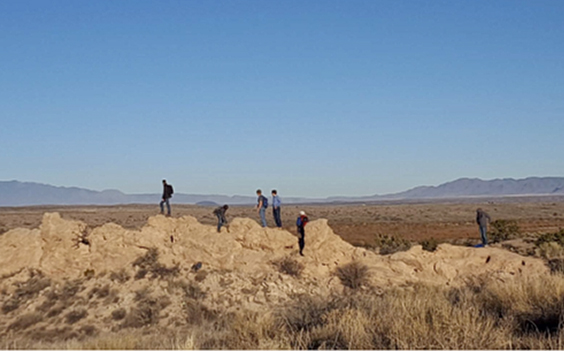NM Tech Student to Study Fault Zone Geology to Help Gauge Subsurface Water Flow (continued)
By Catherine Ortega Klett, NM WRRI Program Manager
Because calcite cementation is particularly effective at creating a seal, Johnny Ray will focus on the analysis of that mineral from samples taken along the Loma Blanca fault. In addition, by determining the stratigraphy of the host sediments and their hydrologic properties, he will produce a hydrostratigraphic model of the region to provide a framework for numerical flow-modeling efforts. Key data include grain size, sorting, and lithologic distribution to constrain hydrologic properties (i.e., porosity and permeability), and electron microscopy to provide enhanced compositional information for samples taken along the fault. This data will be combined with thin section analyses and geochemical results to help formulate a more complete model of the controls on cross-fault permeability. Empirical data on water mobility will also be obtained from aquifer well pumping tests, and this will be used to further refine the overall water-flow model. The final product will be an improved and ground-truthed working model of cross-fault fluid flow through areas of fault-zone fractured and calcite-cemented rock.
It is expected that the project will improve our knowledge of the hydrogeologic behavior of faults, and thereby also enhance understanding of societally relevant geoscience issues. For example, the proposed and anticipated research results may be applied to better understand contaminant transport in faulted aquifers. It may also contribute to the ability to predict the development of overpressures in faults associated with induced seismicity. This in turn could lead to a better characterization of the behavior of hydrocarbon reservoirs and/or CO2 repositories in response to changes occurring over an extended period of time.

NM Tech undergraduates collecting data along the Loma Blanca fault in the fall of 2016.
